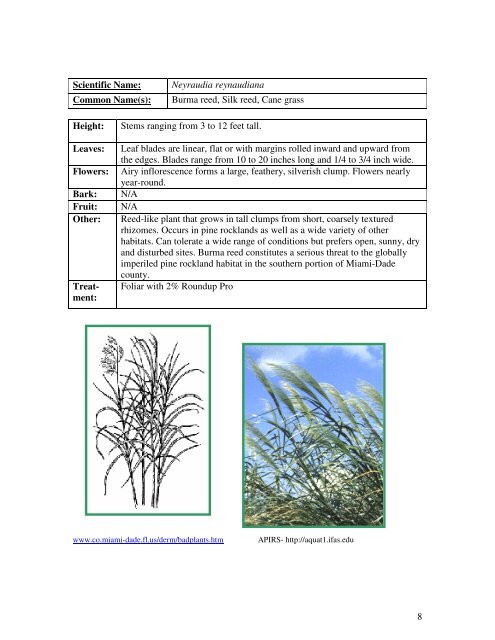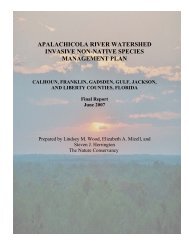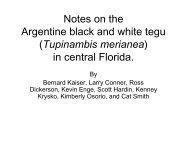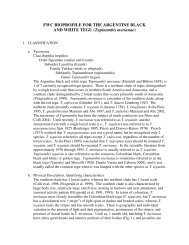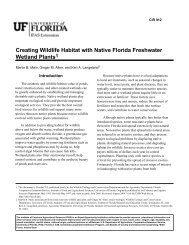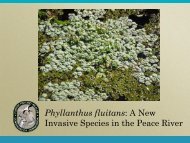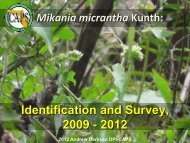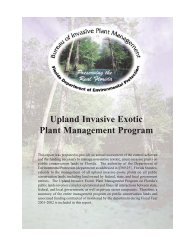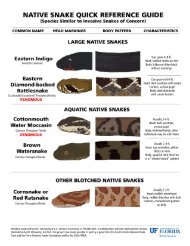Identification Guide For Invasive Exotic Plants of the Florida Keys
Identification Guide For Invasive Exotic Plants of the Florida Keys
Identification Guide For Invasive Exotic Plants of the Florida Keys
You also want an ePaper? Increase the reach of your titles
YUMPU automatically turns print PDFs into web optimized ePapers that Google loves.
Scientific Name:<br />
Common Name(s):<br />
Neyraudia reynaudiana<br />
Burma reed, Silk reed, Cane grass<br />
Height:<br />
Leaves:<br />
Flowers:<br />
Bark:<br />
Fruit:<br />
O<strong>the</strong>r:<br />
Treatment:<br />
Stems ranging from 3 to 12 feet tall.<br />
Leaf blades are linear, flat or with margins rolled inward and upward from<br />
<strong>the</strong> edges. Blades range from 10 to 20 inches long and 1/4 to 3/4 inch wide.<br />
Airy inflorescence forms a large, fea<strong>the</strong>ry, silverish clump. Flowers nearly<br />
year-round.<br />
N/A<br />
N/A<br />
Reed-like plant that grows in tall clumps from short, coarsely textured<br />
rhizomes. Occurs in pine rocklands as well as a wide variety <strong>of</strong> o<strong>the</strong>r<br />
habitats. Can tolerate a wide range <strong>of</strong> conditions but prefers open, sunny, dry<br />
and disturbed sites. Burma reed constitutes a serious threat to <strong>the</strong> globally<br />
imperiled pine rockland habitat in <strong>the</strong> sou<strong>the</strong>rn portion <strong>of</strong> Miami-Dade<br />
county.<br />
Foliar with 2% Roundup Pro<br />
www.co.miami-dade.fl.us/derm/badplants.htm<br />
APIRS- http://aquat1.ifas.edu<br />
8


